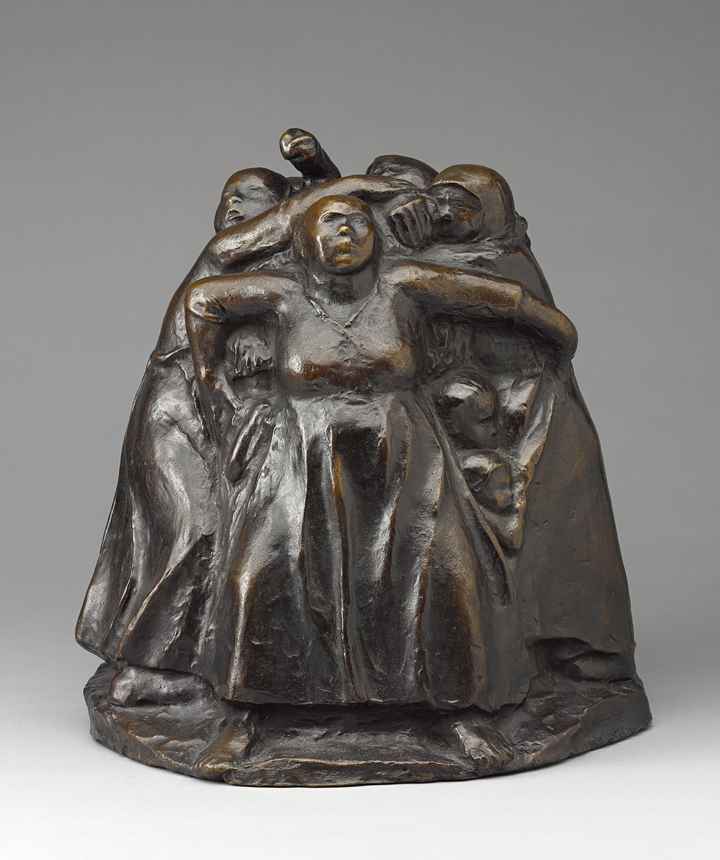At the threshold of Christmas, our last days of Advent focus on two strong mothers, Elizabeth and Mary. Mothers whose strength in the face of challenges and hardships has been the source of strength for people throughout the centuries. Mothers whose witness of faith made profound impressions upon their children and communities. Mothers who had experienced not only the joy of new life but also the unspeakable tragedy of the execution of their children. Elizabeth and Mary are towering figures of motherhood.
Motherhood is one of the primary themes in the powerful art of Käthe Kollwitz, but it is never portrayed sentimentally. Kollwitz faced adversity from the very beginning of her artistic career and fought for her place and voice. As a young, exceptionally talented student in the 1880s, she was denied entrance into the Prussian Academy of Arts because she was a woman. By the end of her life she had become the first female art professor at that same institution.
Her social justice-oriented drawings, prints, and posters raised consciousness around situations of suffering and injustice in her time. They still stir hearts today. Among her most impassioned subjects were the dignity and rights of women and mothers.
Kollwitz’s portrayal of motherhood comes in part from a tragedy in her own life. At the beginning of World War I, her son Peter was killed at the front lines. The horror of that loss can be witnessed in many of her drawings of distraught mothers holding their dead children, like secular versions of a pietà. It also led her to a life of promoting pacifism in the face of violence.

Turm der Mütter, Kät, German, 1867–1945, conceived 1937–1938, cast after August 1961, bronze, 27.9 x 27.4 x 28.8 cm. Art Gallery of Ontario, Gift of Dr. Brian McCrindle, 2015. 2015/137. Photo © Art Gallery of Ontario.he Kollwitz
Tower of Mothers is unique in Kollwitz’s oeuvre, as she is not primarily known for sculpture. However, its power and impact cannot be denied. It models a pyramidal block of bronze composed of mothers creating a protective circle around their young children. Their stance is brave and defiant. Kollwitz’s composition draws our attention to their unity, solidarity, and strength.
It’s not a stretch to see Elizabeth and Mary as mothers like these. Supporting each other in a domineering patriarchal society. Protecting their children from Herod’s horrendous massacre of the innocents. Providing their precious children with the witness of fortitude and strength they would need in their own adulthood.
Before we embrace the renewed joy of the incarnation this Christmas, perhaps we should linger over this image of mothers. This Tower of Mothers stretches back to the beginning of humanity, through the whole of salvation history, up to our own beloved mothers. Without this tower innocents would be trampled. Without this tower society would crumble. Without this tower we would not know breath.
Lest we look too naively upon Mary and her newborn child in the nativity scenes that will fill our churches and homes this Christmas, keep in mind this Tower of Mothers. We are here through their sacrifice.
This reflection is one of four meditations on various works of art for Advent. The meditations will be collected here as they are published.
These essays are also published in our December 2019 issue of U.S. Catholic (Vol. 84, No. 12, pages 12–17). Click here to subscribe to the magazine.













Add comment